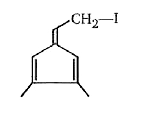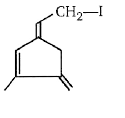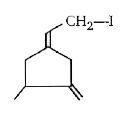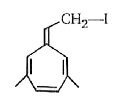The most reactive compound towards formation of cyanohydrin on treatment with KCN followed by acidification is
benzaldehyde
p-nitrobenzaldehyde
phenylacetaldehyde
p-hydroxybenzaldehyde
To determine the most reactive compound towards the formation of cyanohydrin when treated with KCN followed by acidification, we need to analyze the reactivity of different carbonyl compounds (aldehydes and ketones) based on the stability of the carbonyl carbon.
1. Understanding the Reaction:
- When KCN is added to a carbonyl compound (aldehyde or ketone), the cyanide ion (CN⁻) acts as a nucleophile and attacks the carbonyl carbon, which has a partial positive charge due to the electronegativity of oxygen.
- The reaction leads to the formation of a cyanohydrin (RC(OH)(CN)) after acidification.
2. Identifying the Key Factor:
- The reactivity of the carbonyl compound towards nucleophilic attack depends on the positive charge on the carbonyl carbon. The more positive the carbonyl carbon, the more reactive the compound is towards nucleophilic attack.
3. Comparing the Given Compounds:
- The compounds to compare are:
- Benzaldehyde
- Para-nitrobenzaldehyde
- Phenylacetaldehyde
- Para-hydroxybenzaldehyde
4. Analyzing Each Compound:
- Benzaldehyde: The carbonyl carbon has a moderate positive charge due to the resonance stabilization from the phenyl group.
- Para-nitrobenzaldehyde: The nitro group (NO₂) is a strong electron-withdrawing group. It pulls electron density away from the carbonyl carbon, increasing its positive charge, making it more reactive.
- Phenylacetaldehyde: Similar to benzaldehyde, the carbonyl carbon is stabilized by the phenyl group, but not as much as the nitro group in para-nitrobenzaldehyde.
- Para-hydroxybenzaldehyde: The hydroxyl group (OH) is an electron-donating group through resonance, which decreases the positive charge on the carbonyl carbon, making it less reactive.
5. Conclusion:
- Among the compounds analyzed, para-nitrobenzaldehyde has the highest positive charge on the carbonyl carbon due to the electron-withdrawing effect of the nitro group. Therefore, it is the most reactive compound towards the formation of cyanohydrin.
Final Answer:
The most reactive compound towards the formation of cyanohydrin is para-nitrobenzaldehyde.
- When KCN is added to a carbonyl compound (aldehyde or ketone), the cyanide ion (CN⁻) acts as a nucleophile and attacks the carbonyl carbon, which has a partial positive charge due to the electronegativity of oxygen.
- The reaction leads to the formation of a cyanohydrin (RC(OH)(CN)) after acidification.
- The reactivity of the carbonyl compound towards nucleophilic attack depends on the positive charge on the carbonyl carbon. The more positive the carbonyl carbon, the more reactive the compound is towards nucleophilic attack.
- The compounds to compare are:
- Benzaldehyde
- Para-nitrobenzaldehyde
- Phenylacetaldehyde
- Para-hydroxybenzaldehyde
- Benzaldehyde: The carbonyl carbon has a moderate positive charge due to the resonance stabilization from the phenyl group.
- Para-nitrobenzaldehyde: The nitro group (NO₂) is a strong electron-withdrawing group. It pulls electron density away from the carbonyl carbon, increasing its positive charge, making it more reactive.
- Phenylacetaldehyde: Similar to benzaldehyde, the carbonyl carbon is stabilized by the phenyl group, but not as much as the nitro group in para-nitrobenzaldehyde.
- Para-hydroxybenzaldehyde: The hydroxyl group (OH) is an electron-donating group through resonance, which decreases the positive charge on the carbonyl carbon, making it less reactive.
- Among the compounds analyzed, para-nitrobenzaldehyde has the highest positive charge on the carbonyl carbon due to the electron-withdrawing effect of the nitro group. Therefore, it is the most reactive compound towards the formation of cyanohydrin.
The most reactive compound towards the formation of cyanohydrin is para-nitrobenzaldehyde.
Similar Questions
Knowledge Check
Most reactive compound toward SN1 is :
A B
B C
C D
D
The compound most suitable for the preparation of cyanohydrin is
View SolutionThe most reactive amine towards dilute hydrochloric acid is…
View SolutionWhich one is most reactive towards AgNO3
View SolutionThe most reactive amine towards dilute hydrochloric acid is
View SolutionMost reactive alkene towards dil. HCl is
View SolutionWhich one is most reactive towards SN1 reactions ?
View SolutionMost reactive halide towards SN1 reactions is
View Solution